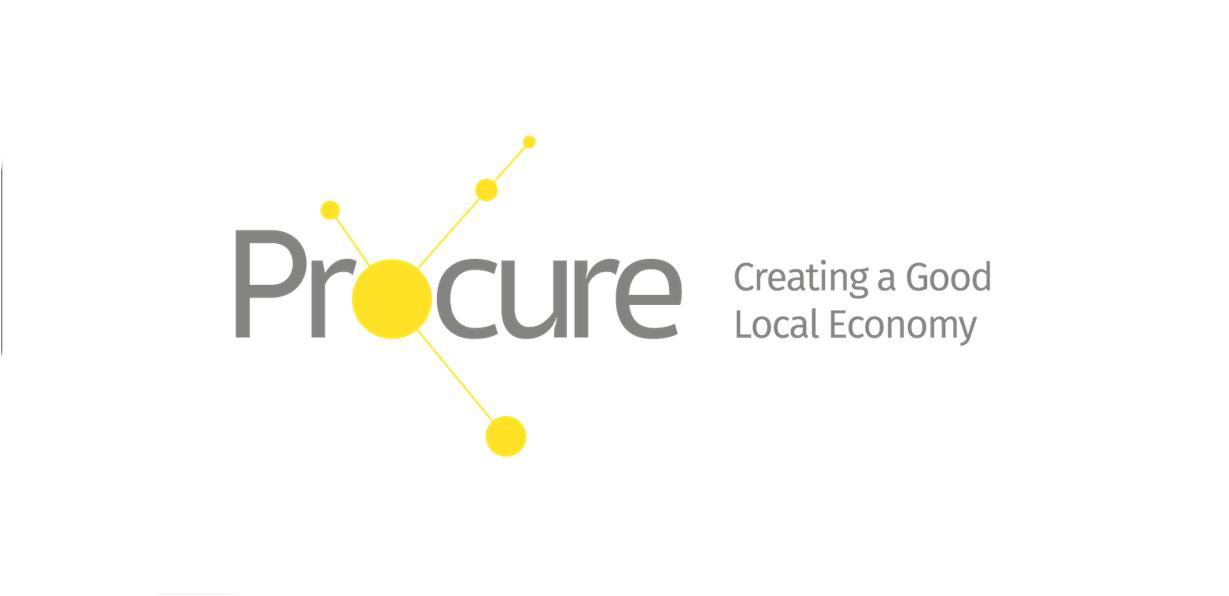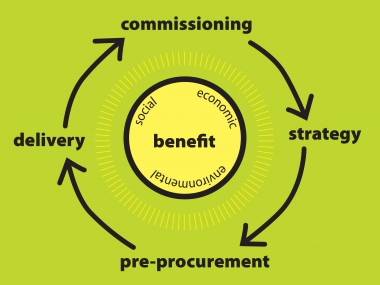The importance of procurement to city economies
Edited on
13 October 2020This article explores why procurement is increasingly being seen as a way of addressing some of the economic, social and environmental issues facing our cities. It does this through reflecting on: the legislative framework for procurement; the activities of the Procure network; the importance of understanding where procurement spend goes; and how social considerations can be more effectively embedded into procurement processes.

Context
- First, the Directives seek to encourage more flexibility in procurement – this includes the ability to engage with potential suppliers before a good or service goes to the market;
- Second, the Directives seek to enhance the engagement of SMEs in the procurement process – making them more aware of opportunities, encouraging them to bid, and ultimately winning contracts;
- Third, the Directives actively encourage purchasers to consider how procurement can be used to address wider social and environmental goals.
 The Procure network
The Procure network- How the European Procurement Directives and associated national level law influences the design of goods and services and their procurement;
- Where their existing spend goes – the extent to which it is in their local economies, with particular sectors of business, and with SMEs;
- How they can be innovative in procurement and particularly how social and environmental criteria can be embedded in the process;
- How SMEs can be engaged in the process and supported to bid for opportunities;
- How the impact of procurement spend and its contribution to wider outcomes can be measured and monitored.
- Preston (UK) has measured where the procurement spend of their anchor institutions goes in geographical and sectoral terms;
- Albacete (Spain) has started to link procurement to job creation through including clauses in contracts around creating employment opportunities;
- Almelo (Netherlands) are working with business networks to develop the skills and capabilities of SMEs to enable them to bid for procurement opportunities;
- Koszalin (Poland) have linked what they want to achieve through procurement to the priorities of their Development Strategy;
- Lublin (Poland) has a dedicated procurement office and procurement plan which gives potential suppliers notice of upcoming opportunities;
- Candelaria (Spain) look to co-design goods and services with residents of the city through community panels and prior to any procurement process being undertaken;
- The Metropolitan City of Bologna (Italy) has been innovative in procurement through actively considering green issues, social responsibility and the role of SMEs in contracting;
- Koprivnica (Croatia) is seeking to encourage SMEs to bid for opportunities by reducing the number of quotes required for tenders below 20,000 Euros;
- Nagykallo (Hungary) have engaged with businesses prior to procurement to make them aware of opportunities;
- District 9, Prague (Czech Republic) advertises all procurement opportunities on the municipality website;
- Satu Mare (Romania) are undertaking some lotting of procurement opportunities to encourage smaller businesses to bid.
 Central to the activities of the Procure network to date has been setting the context for the Integrated Action Plans. Prior to cities doing any work around maximising the impact of procurement through social and environmental criteria and through the engagement of SMEs, they need to understand three contextual factors. First, they need to understand the legislative framework in which the action plan is being developed – this encompasses European and National level law and local level policy. Second, they need to understand the ways in which they can be innovative in procurement and what they can do around local economic, social and environmental issues. And third, they need to understand their existing position in terms of where their spend goes.
Central to the activities of the Procure network to date has been setting the context for the Integrated Action Plans. Prior to cities doing any work around maximising the impact of procurement through social and environmental criteria and through the engagement of SMEs, they need to understand three contextual factors. First, they need to understand the legislative framework in which the action plan is being developed – this encompasses European and National level law and local level policy. Second, they need to understand the ways in which they can be innovative in procurement and what they can do around local economic, social and environmental issues. And third, they need to understand their existing position in terms of where their spend goes.
- The geography of spend – in this, they might be interested in the proportion of their suppliers and the proportion of their spend which is with businesses and organisations based in their municipality boundary; in their wider city-region or region; or/and in their country. They might also be interested in the proportion of spend which is leaking out of their municipality boundary or city-region.
- The sectors of spend – in this, they might be interested in the proportion of spend which is with organisations in the construction or communications sector, for example or with consultants. This can in turn be linked to the geographical analysis to identify the sectors where there is lots of spend in their municipality or city-region; and in turn the sectors where there is leakage out of the local economy and gaps (sectors where there is very little local spend).
- The nature of spend - In this they might be interested in the proportion of their spend which is with SMEs or Non-Governmental Organisations (NGOs), for example. This can in turn be linked to the geographical analysis to identify the extent to which suppliers based in the municipality or city-region are SMEs or NGOs.
- Sharing this data with local stakeholders in accessible ways, for instance with infographics, helps to increase understanding of the impact of public expenditure, and generate better awareness of procurement as a tool to achieve policy goals.
- Commissioning – in the design of goods and services, anchor institutions can ask potential suppliers to develop products which address particular outcomes such as reducing crime;
- Tender process – in the tender process, anchor institutions can set percentages of the selection decision which will be assigned to social considerations, for example 10% and then ask potential suppliers questions around these criteria;
- Tender decision – in the decision, anchor institutions can score against social considerations;
- Monitoring – anchor institutions can monitor the extent to which suppliers are delivering against social considerations.
 Submitted by Matthew Baqueri... on
Submitted by Matthew Baqueri... on




